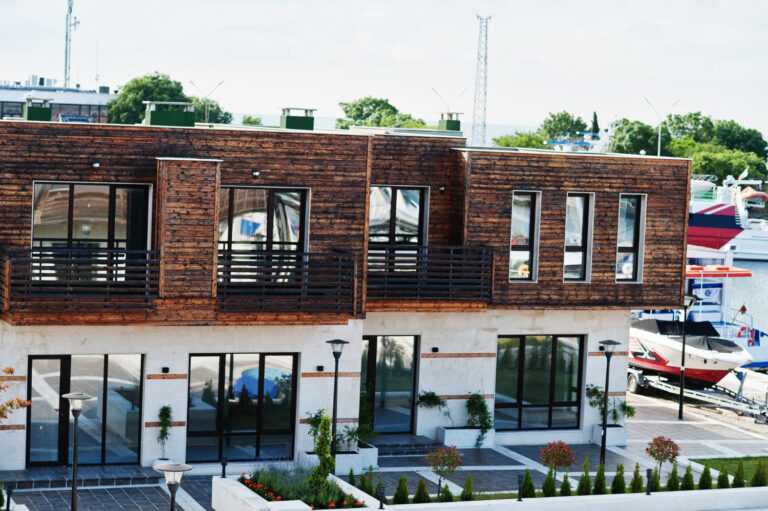How to Guide to Low-Pressure Washing Techniques Bristol(2024)
Understanding Low-Pressure Washing Techniques in Bristol, Tennessee
We've all been there, staring at a grimy exterior, wondering how to bring back that sparkle without causing damage. That's where low-pressure washing techniques come in handy, especially for us folks in Bristol, Tennessee. I've learned that these gentle cleaning methods are a game-changer for maintaining our homes and businesses. They're not just practical; they're also environmentally friendly and can easily tackle everything from deck cleaning to roof cleaning.
In this article, I'll dive into the ins and outs of low-pressure washing techniques. We'll explore the science behind this soft washing approach, check out its benefits for Bristol properties, and look at various applications. From algae removal on siding to mildew removal on stucco, I'll share what I've discovered about this gentle yet powerful cleaning method. Trust me, by the end of this, you'll see why so many of us are ditching high-pressure water cleaning for this kinder alternative.
The Science Behind Low-Pressure Washing
I've been in the cleaning business for years, and let me tell you, low-pressure washing is a game-changer. It's not just about blasting dirt away; there's some natural science behind it. Let me break it down for you.
How Low-Pressure Washing Works
When I first started, I thought higher pressure meant better cleaning. Boy, was I wrong! Low-pressure washing, or soft washing, is all about finesse. We use water pressure of around 500 PSI or less, which is way gentler than traditional methods. But here's the kicker—it's not just about the pressure. We mix in unique cleaning solutions that do the heavy lifting.
These solutions are the real MVPs. They soak into the dirt and break it down from the inside out. It's like giving the grime a science experiment bath! The chemicals start working their magic as soon as they hit the surface. We call this the “dwelling time,” and it's crucial. I usually let it sit for at least 5 minutes, sometimes longer for tough jobs. The longer it sits, the more it breaks down the dirt.
Key Components of Low-Pressure Washing Systems
Now, let's talk gear. A good softwash system is like a well-oiled machine. You've got your pump, which is the heart of the operation. It's designed to deliver cleaning solutions at just the right pressure. Then there's the mixing valve—this bad boy makes sure we get the perfect ratio of water to cleaning solution. Trust me, getting this wrong can mess up your whole day.
We've also got specialized hoses and nozzles. These are different from your garden variety tools. They're designed to spread the cleaning solution evenly without damaging the surface. And wait to get me started on the cleaning solutions themselves. We use biodegradable stuff that is tough on dirt but easy on the environment.
Chemical Reactions in Low-Pressure Washing
Here's where it gets cool. The chemicals we use aren't just for show. They're doing some serious science on your walls. We have sodium hypochlorite for sanitizing, surfactants that break down dirt like nobody's business, and mildewcides to kick mold to the curb.
But the best part? These solutions don't just clean; they prevent regrowth. That means your house stays cleaner for longer. For months, it's like giving your home a shield against mold, algae, and bacteria. How's that for efficiency?
Benefits of Low-Pressure Washing in Bristol
I've been in the cleaning business for years, and let me tell you, low-pressure washing has been a game-changer here in Bristol. It's not just about getting things clean; it's about doing it right. Let me break down why this method is so excellent for our community.
Gentle Cleaning for Delicate Surfaces
When I started, I made the mistake of using high-pressure washing on everything. Big oops! I quickly learned that delicate surfaces like roofs, siding, and outdoor furniture need a gentler touch. High-pressure washing can actually damage these surfaces, leading to costly repairs. That's where soft washing comes in handy. It's like giving your house a spa day instead of a power scrub.
I remember this one time I was cleaning a beautiful old Victorian home in Bristol. The owner was worried about damaging the intricate woodwork on the porch. I used our soft washing technique, and boy, did it make a difference! The dirt and grime just melted away, leaving the wood fresh and undamaged. It's all about using the proper cleaning solutions and low pressure to do the job.
Environmental Considerations
Now, let's talk green. I'm a big fan of keeping our beautiful Bristol clean and eco-friendly. Soft washing is a win-win in this department. We use biodegradable cleaning solutions that break down naturally, so there are no nasty chemicals hanging around to harm plants or critters. Plus, because we use less water and lower pressure, we're conserving resources and reducing our environmental impact.
I've seen firsthand how traditional pressure washing can strip paint and damage surfaces, sending yucky stuff into our local ecosystem. With soft washing, we avoid all that. Plus, it's safer for the cleaning folks (like yours indeed) and your pets running around the yard.
Cost-Effectiveness
Here's where it gets really interesting for us Bristol homeowners. Soft washing might seem like a new trend, but it's a wise long-term investment. I've had customers call me back years after a smooth wash, amazed at how clean their property still looks.
The secret? Our cleaning solutions don't just clean; they prevent the regrowth of mold, algae, and other nasties. This means you won't have to call us back every few months for a new cleaning. It's like giving your house a shield against dirt and grime.
Applications of Low-Pressure Washing
I've been in the cleaning business for years, and let me tell you, low-pressure washing is a game-changer. It's not just about making things look pretty; it's about preserving and protecting surfaces. Let me walk you through some of the ways we use this technique.
Residential Uses
In my experience, homeowners love low-pressure washing for several reasons. It's excellent for cleaning siding, decks, and roofs without causing damage. I remember this once: I was working on a house with beautiful cedar shake siding. The owner was worried about high-pressure washing damaging the wood. We used our soft wash technique, and it was like magic! The dirt and grime just melted away, leaving the wood fresh and undamaged. Similarly, low-pressure washing can be used to clean delicate surfaces like painted walls, vinyl siding, and even outdoor furniture.
Roofs are another big one. We use specialized solutions that clean and prevent the regrowth of algae and moss. It's like giving your roof a shield against those pesky growths. Plus, it can help reduce energy bills by removing heat-absorbing dark spots.
Commercial Applications
Low-pressure washing is a real lifesaver for commercial buildings. I've worked on many buildings, from small offices to big industrial complexes. The key here is efficiency and safety. We can quickly clean large areas without damaging the structure or surrounding landscaping.
One of the most incredible things about commercial applications is how they can improve a business's image. I once cleaned the exterior of a restaurant that was looking pretty grimy. After we were done, the place looked brand new. The owner told me later that customer traffic increased noticeably. It just goes to show how important first impressions are in business.
Historic Building Preservation
This is where low-pressure washing shines. Historical buildings are like delicate treasures; you can't just blast them with high-pressure water. We use super gentle techniques and specialized cleaning solutions that are safe for old materials.
Conclusion
Low-pressure washing techniques have proven to be a game-changer for property maintenance in Bristol, Tennessee. This gentle yet effective method offers a safe and eco-friendly alternative to traditional high-pressure cleaning, preserving delicate surfaces while delivering impressive results. From residential homes to commercial buildings and even historic structures, soft washing has shown versatility and efficiency in tackling various cleaning challenges.
As we've seen, the benefits of low-pressure washing extend beyond cleanliness. It impacts energy efficiency, property value, and environmental conservation. By choosing this method, Bristol residents and businesses are keeping their properties in top shape and contributing to a more sustainable and beautiful community. The science behind soft washing, combined with its practical applications, makes it a smart choice for anyone looking to maintain their property effectively and responsibly.
FAQs
- What pressure level is recommended for pressure washing?
For typical household cleaning tasks, it is advisable to use a pressure washer with a pressure setting between 1300 and 2400 PSI. - Can you share some effective techniques for pressure washing?
To avoid streaks and lines, make overlapping passes with the pressure washer. Angle the spray to prevent pushing dirt more profoundly into the surface, which can happen if water is directed straight at it. When applying detergent, start from the bottom and work your way up, but ensure you rinse from the top down. - What does low-pressure washing entail?
Low-pressure washing involves cleaning surfaces with a pressure range of 60 to 300 PSI to prevent damage, especially on softer or more delicate surfaces like brick exteriors, siding, or stucco.









One Comment
Comments are closed.